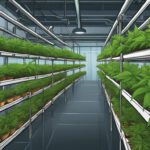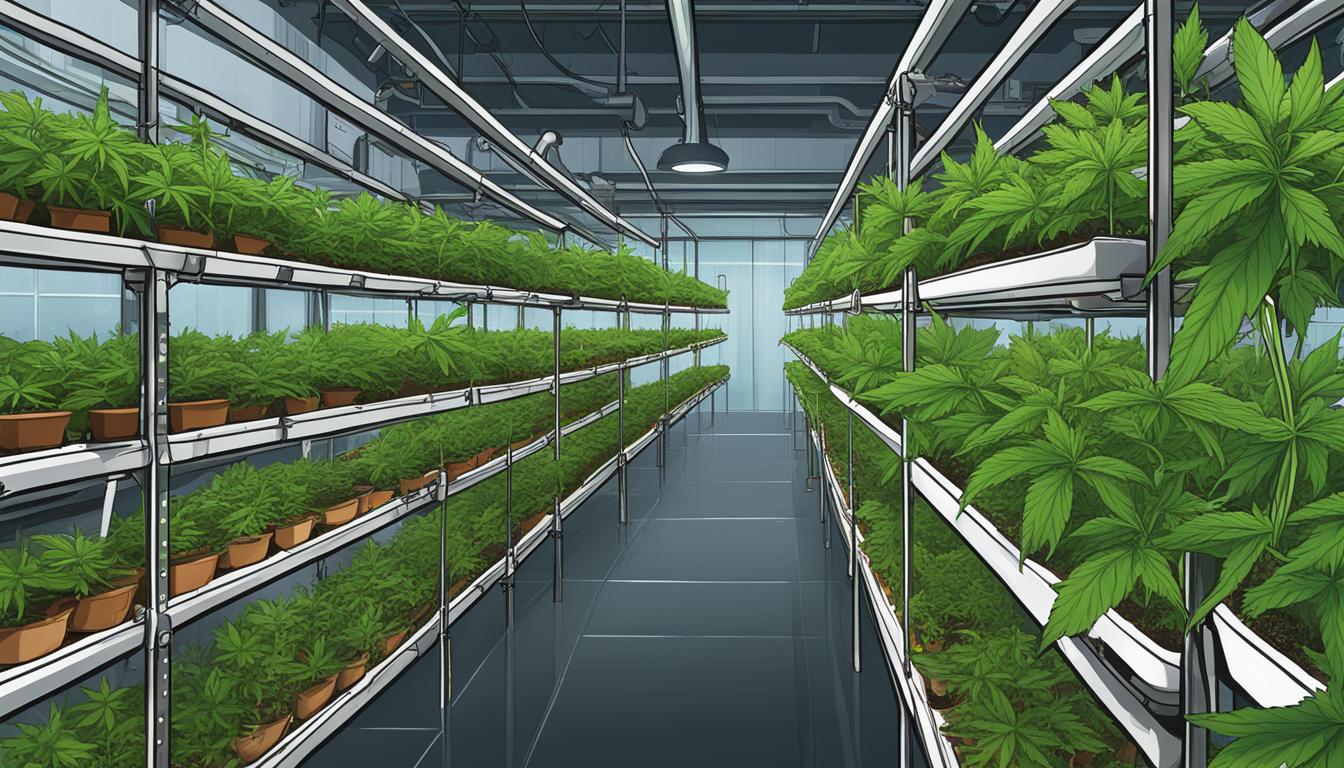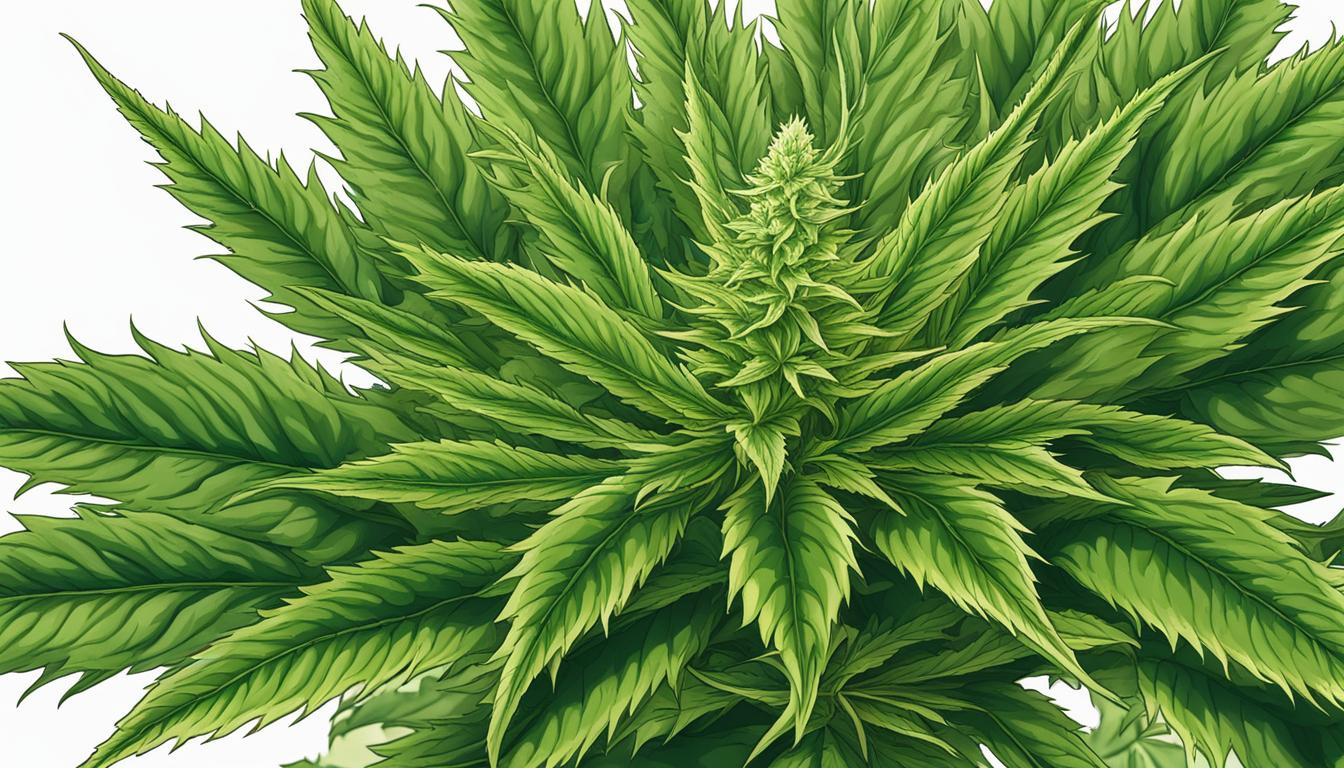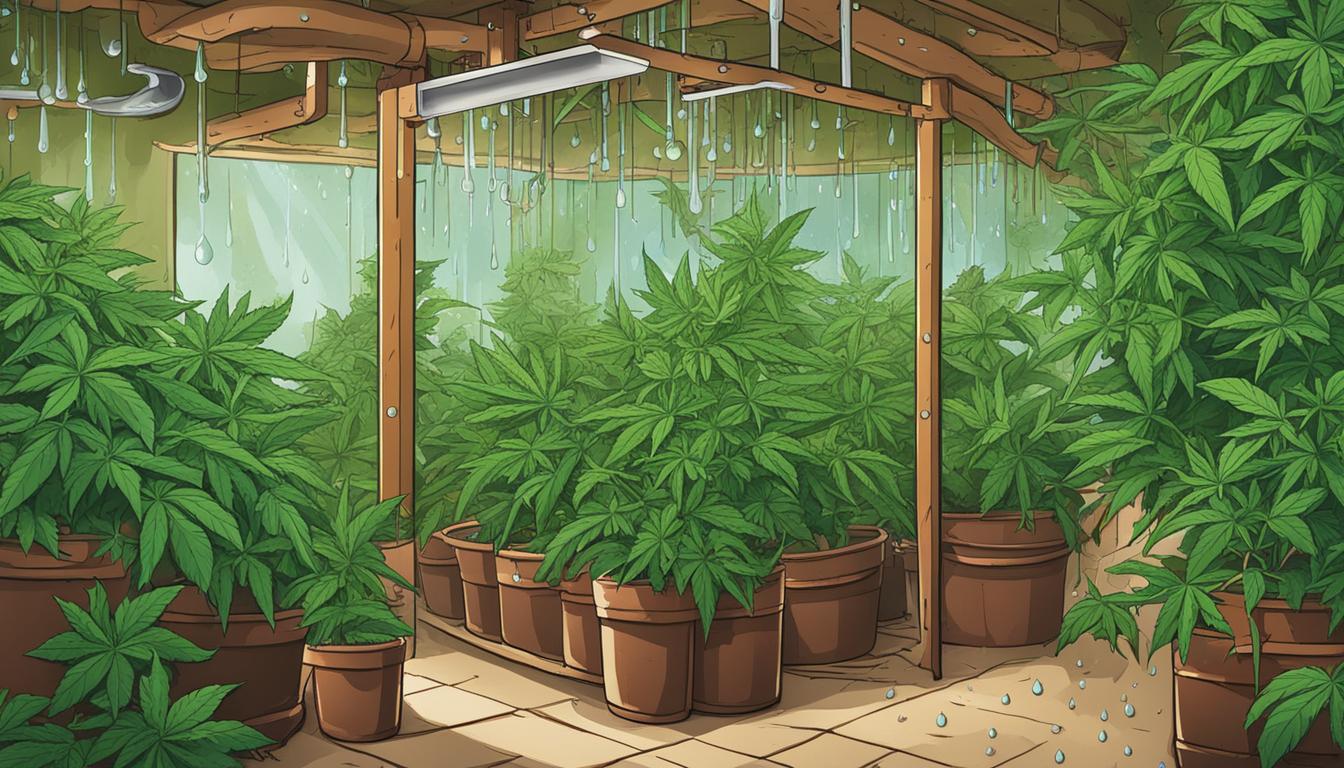If you are looking for a more efficient and controlled approach to cannabis cultivation, hydroponic systems may be the answer. Hydroponic cannabis systems provide a way to grow cannabis without soil, using nutrient solutions and a variety of growing mediums.
But why choose hydroponic systems for cannabis growth? One major benefit is the ability to maximize your harvest by optimizing environmental factors such as temperature, humidity, and lighting. Additionally, hydroponic systems can be more efficient in terms of water and nutrient usage compared to traditional soil-based methods.
In this article, we will explore the world of hydroponic systems for efficient cannabis growth and provide tips on how to set up and optimize your own system. From understanding the principles behind hydroponics to choosing the right system and maintaining the ideal growing conditions, we’ve got you covered.
Key Takeaways:
- Hydroponic systems can provide a more efficient and controlled approach to cannabis cultivation.
- Maximize your harvest by optimizing environmental factors such as temperature, humidity, and lighting.
- Hydroponic systems can be more efficient in terms of water and nutrient usage compared to traditional soil-based methods.
- Understanding the principles behind hydroponics is crucial for successful cannabis growth.
- Choosing the right hydroponic system and maintaining ideal growing conditions are key to unlocking the full potential of hydroponics for cannabis.
Understanding Hydroponic Systems for Cannabis
If you’re looking for a more efficient and controlled way to grow your cannabis, hydroponics may be the solution you’re searching for. Hydroponics is a method of growing plants without soil, using a nutrient-rich water solution instead. By using hydroponic systems, you can provide your cannabis plants with precisely what they need, maximizing growth and yield while minimizing waste.
Hydroponic systems for cannabis involve placing the plant’s roots directly into the nutrient solution, which is then circulated around the roots to deliver nutrients and oxygen. This method allows for more efficient nutrient uptake and eliminates the need for soil that is often rich in pests, diseases, and other contaminants.
Another significant advantage of hydroponics for cannabis is the ability to monitor and control environmental factors like temperature, humidity, and lighting much more easily than in traditional soil cultivation. This level of control can help you optimize your growing conditions to achieve the desired plant size, yield, and potency.
Types of Hydroponic Systems for Cannabis
There are several types of hydroponic systems available for cannabis cultivation, each with its own set of advantages and disadvantages. Depending on your specific needs and preferences, you may opt for one of the following:
- Drip irrigation: delivers nutrient solution directly to the plant’s roots through a series of tubes and emitters, providing a constant supply of nutrients to the roots.
- Flood and drain: also called the ebb and flow system, which floods the growing tray with nutrient solution at regular intervals and then drains the excess liquid.
- NFT: the Nutrient Film Technique system uses a shallow stream of nutrient solution constantly flowing through a channel where the plant’s roots dangle.
- Aeroponics: which sprays nutrient solution directly onto the plant’s roots suspended in the air, providing optimal oxygen uptake.
The choice of the hydroponic system will depend on several factors such as the available space, labor, and budget you have and the type of cannabis crop you want to cultivate.
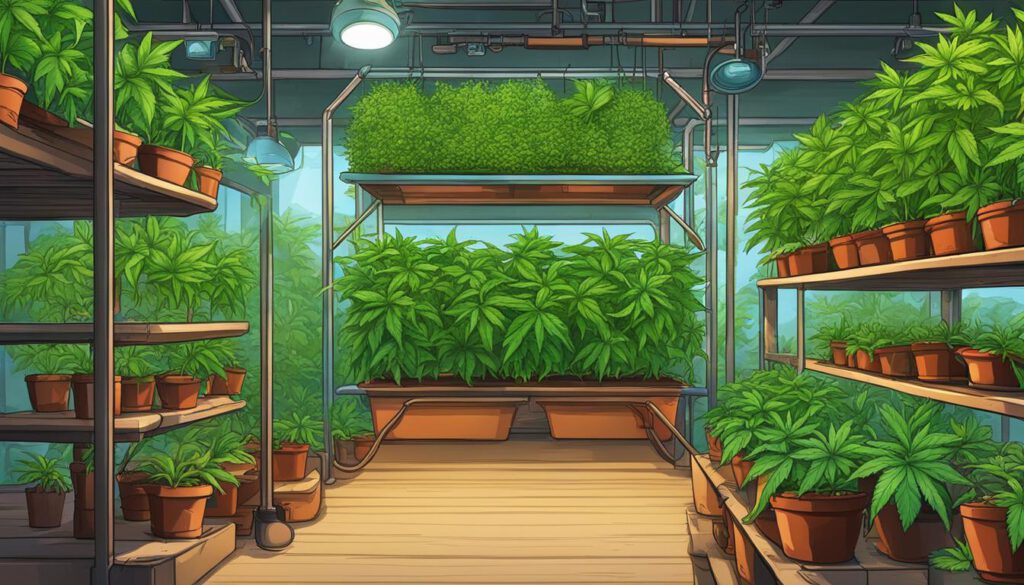
Choosing the Right Hydroponic System
When it comes to hydroponic systems for efficient cannabis growth, choosing the right system is critical. Not all hydroponic systems are created equal, and selecting the right one depends on various factors such as budget, space, and desired yield.
One system that stands out for efficient hydroponic systems is the deep water culture (DWC) system. DWC systems are relatively easy to set up and maintain, making it an excellent option for beginners. It involves suspending the plant’s roots in a nutrient-rich solution, allowing for optimal nutrient absorption and maximum growth.
If you have limited space, the Nutrient Film Technique (NFT) system may be a more suitable option. NFT systems use a thin film of nutrient solution that continuously flows over the roots, providing an oxygen-rich environment for the plant’s growth. This system is ideal for smaller scale operations, but it requires more monitoring and attention than DWC systems.
For those with a higher budget and more significant space, ebb and flow systems offer a versatile and customizable option. This system delivers nutrients to the plants through a flood and drain mechanism, allowing for greater control over pH and nutrient levels.
Ultimately, the decision to choose the right hydroponic system for efficient cannabis growth depends on your specific needs. Consider the space available, budget, and desired yield, and choose the system that best fits your requirements.
Comparing Hydroponic Systems
| Hydroponic System | Pros | Cons |
|---|---|---|
| Deep Water Culture (DWC) | Easy to set up and maintain. Allows for optimal nutrient absorption and maximum growth. | Not suitable for large-scale operations. |
| Nutrient Film Technique (NFT) | Thin film of nutrient solution provides an oxygen-rich environment. Ideal for smaller scale operations. | Requires more monitoring and attention. |
| Ebb and Flow | Customizable and versatile. Greater control over pH and nutrient levels. | Higher cost and requires more space. |
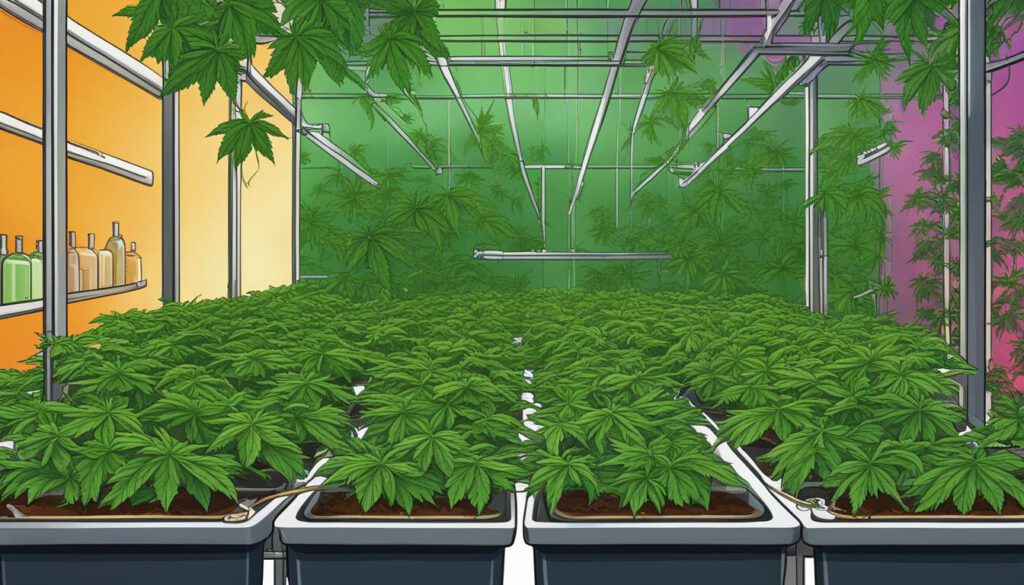
Setting Up Your Hydroponic System for Cannabis
Now that you have chosen your hydroponic system for cannabis, it’s time to set it up. Proper setup is crucial for the success of your hydroponic cannabis system. Here are some steps to follow:
Choose the Right Growing Medium
The growing medium is what provides support for your cannabis plants’ roots while also allowing them to absorb nutrients. Some common hydroponic growing mediums include Rockwool, Coconut Coir, Perlite, and Vermiculite. Choose the one based on your preference and budget.
Set up the Necessary Equipment
Once you have your growing medium, you need to set up the necessary equipment. This includes pumps, tubing, and a reservoir for the nutrient solution. A timer is also needed to schedule automatic feeding and control the light cycle. Ensure you have all the necessary equipment before starting the setup process.
Ensure Proper Lighting
Cannabis needs specific lighting conditions to grow. LED lights are a great option for hydroponic cannabis systems as they offer low heat and low energy usage. Ensure you place the lights in a way that they cover all the plants in your hydroponic system.
Monitor the pH and Nutrient Levels
It’s essential to maintain the right pH and nutrient balance for optimal growth and productivity. Use a pH meter to monitor the pH levels of the nutrient solution regularly. Maintain the nutrient solution in the correct ratios, as overfeeding can cause damage to your plants.
Prepare Your Plants
Prior to adding your plants to the hydroponic system, ensure they have been prepped accordingly. Remove any dead or damaged leaves, as they can reduce plant growth and flowering.
Now that your hydroponic system for cannabis is set up, it’s time to plant your cannabis seeds or clones. Remember to maintain the necessary conditions for optimal growth, such as temperature, humidity, and lighting. With proper care and attention, you can look forward to a bountiful cannabis harvest.
Nutrient Solutions for Hydroponic Cannabis Growth
Hydroponic cannabis growth relies heavily on nutrient solutions to provide the necessary elements for plant growth and productivity. Without a proper balance of nutrients, your plants may suffer from stunted growth, nutrient deficiencies, or even death.
There are six essential macronutrients that every cannabis plant requires for optimal growth: nitrogen (N), phosphorus (P), potassium (K), calcium (Ca), magnesium (Mg), and sulfur (S). Additionally, there are several micronutrients that are also important, such as iron (Fe), zinc (Zn), and copper (Cu).
These nutrients can be provided through premixed nutrient solutions or can be customized based on the specific needs of your plants at different growth stages. Most nutrient solutions come in two or three parts that are used in different ratios during different phases of growth.
One of the critical factors to consider is the pH level of the nutrient solution. Cannabis plants grow best in a slightly acidic pH range of 5.5-6.5. pH levels that are too high or too low can cause nutrient lockout, where the plant is unable to absorb the nutrients it needs, leading to stunted growth and nutrient deficiencies.
Maintaining the Right Nutrient Balance
Maintaining the right balance of nutrients in your hydroponic system is crucial for efficient cannabis growth. Monitoring the strength and pH level of the nutrient solution regularly can help you catch and correct any imbalances before they cause significant damage to your plants.
In addition to balanced nutrient solutions, it’s important to provide your plants with adequate lighting, proper air circulation, and an appropriate temperature and humidity range to promote healthy growth and high yield.
In conclusion, nutrient solutions are a vital component of hydroponic cannabis growth systems. By ensuring the right balance of essential macronutrients and micronutrients and maintaining the pH level of the nutrient solution, you can optimize your plants’ growth and productivity.
Environmental Factors and Hydroponic Cannabis Growth
Hydroponic systems for efficient cannabis growth provide a highly controlled and optimized environment to ensure the best possible yields. Apart from nutrient solutions, environmental factors such as temperature, humidity, and lighting also play a crucial role in hydroponic cannabis growth.
The ideal temperature for cannabis growth in hydroponic systems ranges from 70 to 78 degrees Fahrenheit during the day and 58 to 70 degrees Fahrenheit at night. Maintaining adequate humidity levels is also critical, with optimal humidity ranging from 40% to 60%. High humidity can increase the risk of mold and mildew, while low humidity can cause plant stress and reduce growth rates.
One of the key benefits of hydroponic systems is the ability to customize lighting to the specific needs of your plants. LED grow lights are a popular choice for hydroponic cannabis growth as they are energy-efficient and can provide the full spectrum of light that plants need for photosynthesis. Another factor to consider is the duration of lighting. Generally, cannabis plants require 16 to 18 hours of light per day during the vegetative stage and 12 hours of light per day during the flowering stage.
Monitoring and adjusting these environmental factors regularly can help ensure that your hydroponic cannabis system is optimized for efficient growth and maximum yields. Now that you understand the importance of environmental factors in hydroponic cannabis growth, let’s explore common challenges and troubleshooting tips in the next section.
Common Challenges and Troubleshooting Tips
As with any cultivation method, hydroponic cannabis systems can come with their own set of challenges. Don’t worry, though – with a little troubleshooting, you can overcome these issues and ensure a successful growth cycle. Here are some common problems you might encounter:
Pests and Diseases
One of the most significant benefits of hydroponic systems is their ability to prevent soil-borne diseases. However, pests and other diseases can still affect your plants. Keep a close eye on your plants and regularly inspect them for any signs of infestation or disease.
If you do notice a problem, act quickly to prevent it from spreading. Remove any affected plants and treat the remaining ones with a pesticide or natural remedy, such as neem oil or insecticidal soap. Make sure to thoroughly clean your system before planting new crops to prevent reinfestation.
pH Imbalances
Correct pH levels are crucial for optimal plant growth and nutrient uptake. A pH level that’s too high or too low can cause nutrient deficiencies or toxicities, stunting your plants’ growth and reducing yield.
Regularly test your nutrient solution’s pH levels and adjust as needed using a pH adjuster. Keep in mind that different plants have different pH requirements, so research your strains for optimal pH levels.
Nutrient Deficiencies
While hydroponic systems provide precise control over nutrient levels, it’s still possible to experience nutrient deficiencies or imbalances. Common nutrient deficiencies include nitrogen, phosphorus, and potassium.
If you notice symptoms such as yellowing leaves, stunted growth, or discoloration, it may be a sign of a nutrient deficiency. Adjust your nutrient solution accordingly, and make sure your plants are getting all the essential nutrients they need at each growth stage.
System Malfunctions
Malfunctions in your hydroponic system can cause serious problems, such as inadequate nutrient delivery or poor ventilation. Regularly inspect your equipment and make sure everything is functioning properly. If you notice any issues, such as a clogged irrigation line or malfunctioning pump, fix them immediately to prevent damage to your plants.
By addressing these common challenges, you can ensure a successful hydroponic cannabis growth cycle and maximize your yield. Remember to stay vigilant in monitoring your plants and addressing any issues promptly to keep your system running smoothly.
Conclusion
Hydroponic systems are revolutionizing the cannabis cultivation process by providing a highly efficient and controlled approach to growth. By understanding the principles of hydroponics, choosing the right system, and optimizing environmental factors, you can unlock the full potential of hydroponics for a bountiful cannabis harvest.
Investing in hydroponic systems for efficient cannabis growth can yield significant benefits such as faster growth, larger yields, and better quality. When choosing a hydroponic system, consider your space, budget, and desired yield to make an informed decision.
Proper setup and maintenance of your hydroponic system are crucial for success. From selecting the right growing medium to maintaining proper nutrient balance, following these steps will help you create an optimal environment for your plants to thrive.
Environmental factors such as temperature, humidity, and lighting also play a critical role in hydroponic cannabis growth. Pay attention to these factors and adjust as necessary to create the ideal conditions for your plants.
Common Hydroponic Cannabis System Challenges and Troubleshooting Tips
As with any cultivation method, hydroponic systems for cannabis growth can come with their own set of challenges. Some common issues include nutrient deficiency, pH imbalance, and pest infestations. If you encounter any of these problems, do not panic.
Instead, take a systematic approach to troubleshoot and solve the issue. Start by identifying the problem and then research possible solutions. Implement solutions one at a time and monitor the results closely. Adjust as necessary until the problem is resolved.
Remember that hydroponic systems require consistent attention and care. By staying vigilant and addressing issues promptly, you can maintain a healthy and productive hydroponic cannabis system.
FAQ
What are hydroponic systems?
Hydroponic systems are a method of growing plants without soil. Instead, plants receive their nutrients directly from a nutrient-rich water solution.
How do hydroponic systems work for cannabis cultivation?
Hydroponic systems provide a controlled environment where cannabis plants can grow without the limitations of soil. Nutrients are delivered directly to the roots, allowing for faster growth and increased yields.
What are the benefits of using hydroponic systems for cannabis?
Hydroponic systems offer several advantages, including faster growth rates, higher yields, better control over growing conditions, and the ability to grow plants year-round.
How do I choose the right hydroponic system for cannabis cultivation?
Consider factors such as space, budget, and desired yield when selecting a hydroponic system. Options include deep water culture, nutrient film technique, and ebb and flow systems.
How do I set up a hydroponic system for cannabis?
Setting up a hydroponic system involves selecting the right growing medium, installing necessary equipment such as pumps and timers, and ensuring proper water and nutrient flow.
What kind of nutrient solutions do I need for hydroponic cannabis growth?
Cannabis plants require a balanced mix of nutrients, including nitrogen, phosphorus, and potassium. pH levels and nutrient concentrations should be regularly monitored and adjusted as needed.
How do environmental factors affect hydroponic cannabis growth?
Temperature, humidity, and lighting are crucial environmental factors that can impact plant growth. Maintaining optimal conditions will promote healthy growth and prevent issues such as mold or nutrient deficiencies.
What are some common challenges in hydroponic cannabis cultivation and how do I troubleshoot them?
Common challenges include pH imbalances, nutrient deficiencies, and pest infestations. Monitoring nutrient levels, adjusting pH, and implementing pest control measures can help address these issues.
Are hydroponic systems suitable for all cannabis cultivators?
Hydroponic systems can be beneficial for both experienced and novice cannabis cultivators. However, they require more attention to detail and monitoring compared to traditional soil-based cultivation methods.





